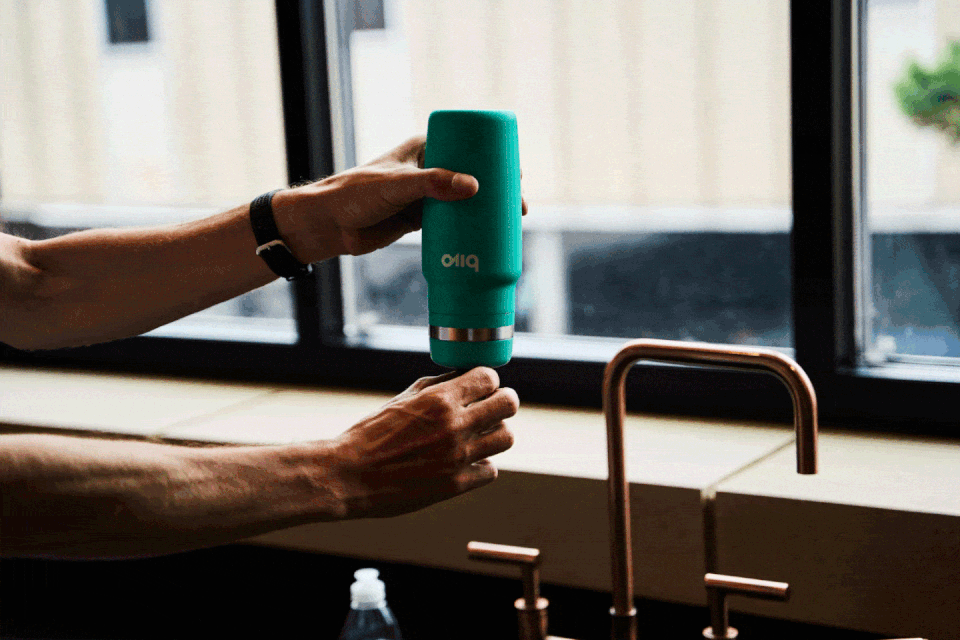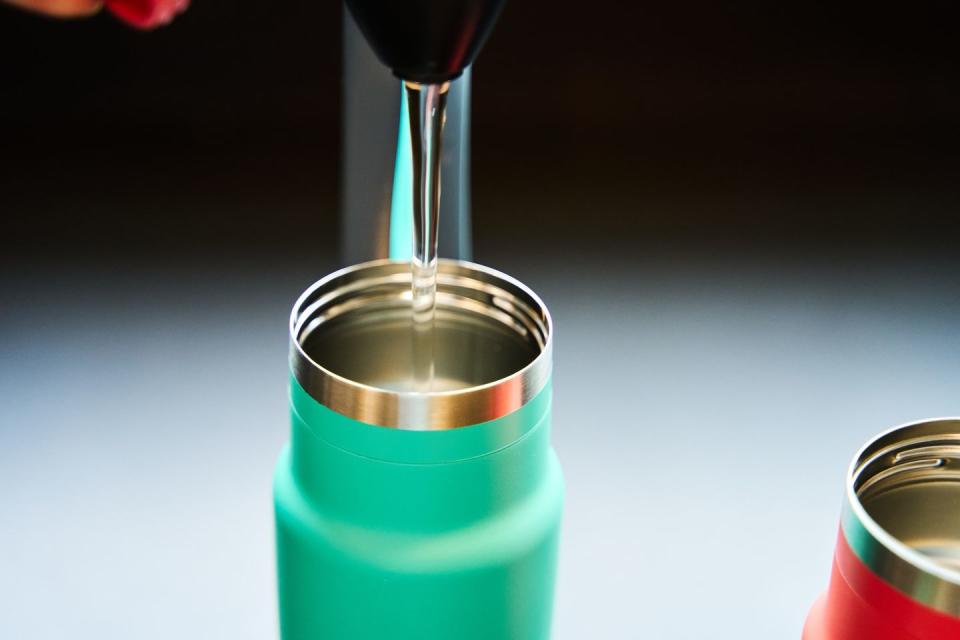The Bivo One Water Bottle Makes it Easier for Cyclists to Drink More While Riding

Bivo, a company founded by Carina Hamel and Robby Ringer, is attempting to reinvent the cycling water bottle we’ve all been using. The company proudly points out that the engineer who helped design its new One stainless steel bottle worked as an engineer for NASA. This is pretty cool, but what is more interesting to me are the company's high aspirations towards changing the reliance on semi-disposable plastic water bottles, which currently dominate the cycling world.
The Good -
The stainless steel body of the Bivo One bottle is intended to be more sustainable long-term, and deliver better-tasting water, versus the plastic bottle that you likely carry in your bottle cage on rides. If you do manage to damage the bottle past the point of unusability, it can be recycled. While the bottle is made in China, Bivo professes to use “factories and vendors we trust and that care for their employees.” Additionally, Bivo is offsetting its carbon emissions by investing in the Cleaner, Safer Water in Cambodia project in order to make the One bottle a carbon-neutral product.
These are all good things, but they would all be sort of besides the point if the Bivo bottle sucked. In reality, Bivo made a bottle that doesn’t suck at all - as in, you don’t need to squeeze it or suck on it to get water out.

Let’s back up for a moment as it might make sense to quickly explain how a conventional cycling water bottle works. More or less, every plastic bottle works the same way; as you squeeze it, you are changing the volume of the container, forcing water out. After you are done squeezing, air is sucked back into the bottle as it returns to its original shape. This puts a halt on drinking until air refills the vacuum inside the bottle, at which point you can take another sip.
Since the Bivo bottle is stainless, you cannot squeeze it as you would with most traditional plastic bicycle water bottles. Instead, Bivo uses a large main nozzle for drinking and a secondary smaller port (just off to the side) with a straw that extends all the way down the bottle to create a smooth air-fluid exchange rate. So, as you drink, air is pulled back into the bottle through the secondary port allowing water to flow smoothly until the bottle is empty. It sounds like a bit much (and I’m willing to wager you have never spent this much time thinking about your water bottles), but it works surprisingly well.

Drinking from a Bivo bottle is as effortless as sipping from a glass, just without any worry of spilling it all over yourself. It is almost like a high-tech sports sippy cup, and I mean that in the best way possible. On rides, this translated to me simply drinking more water. At first, I was honestly surprised how quickly I would go through my Bivo bottles. But I suspect this is only a good thing as often, I struggle to drink enough water on rides.
As expected, drinking from a mostly stainless steel bottle, the water still tasted like water. No plastic aftertaste here, even on hot days. Just keep in mind that your water will get warm (or cold) because Bivo uses a single-wall construction, meaning there is absolutely no insulation.

Cleaning the bottle is impressively easy. The top, straw, and nozzle all come apart easily for cleaning. Bivo recommends using soap, warm water, and handwashing everything, but I’ve put my bottles through the dishwasher with no ill effects.
I had no issue with the Bivo bottles fitting or staying snug inside my King water bottle cages. However, another staffer had one eject on a road ride using a composite cage. I maintain this to be the result of composite cages being bad at holding bottles. Either way, it’s something to keep in mind when riding with a thirty to forty dollar bottle.
The Bad -
I just mentioned it, but it’s worth repeating, these bottles cost $39 and $29 (for the raw version). Compare that to a conventional Purist bottle from Specialized, which costs $20 for an insulated version and is as cheap as $10 for a plain bottle. There is certainly an argument to be made in favor of the Bivo bottle being able to outlast a plastic bottle and thus justifying the price difference. But it’s worth acknowledging that not everyone wants to, or can, spend $80 on a pair of bottles.

Also, I do not recommend the Bivo bottles for racing. For one thing, Bivo bottles are heavy—at about 163 grams compared to 80 grams for a plastic bottle. You also probably do not going to want to toss them in a feed zone, given the price. But, most importantly, the Bivo bottles could posea safety concern. I would much rather run over a loose plastic bottle on the road, which will compress under my wheel, than a stainless-steel one; which from our testing, definitely does not compress.
My final issue with the Bivo bottles is their rubbery, silicone finish. It is more durable than I initially expected, but it looks pretty beat-up after three months of road use. This is purely an aesthetic issue though, as the bottles still perform flawlessly. For those who prefer not to deal with this kind of surface wear, Bivo offers a cheaper bottle with a raw finish. The trade-off being the raw finish is a little bit more slippery, particularly on hot and humid rides.
Final Thoughts -
The Bivo One bottle is not perfect. But if you can live with the quirks I’ve described, it has quite a few upsides. This bottle works especially well for riders looking to reduce their reliance on semi-disposable plastic bottles, or folks that just hate the taste of plasticky water.
I am hoping for a future version with a slightly larger volume than the current 21oz version. For those wanting an insulated bottle, supposedly, one is on its way.
You Might Also Like

